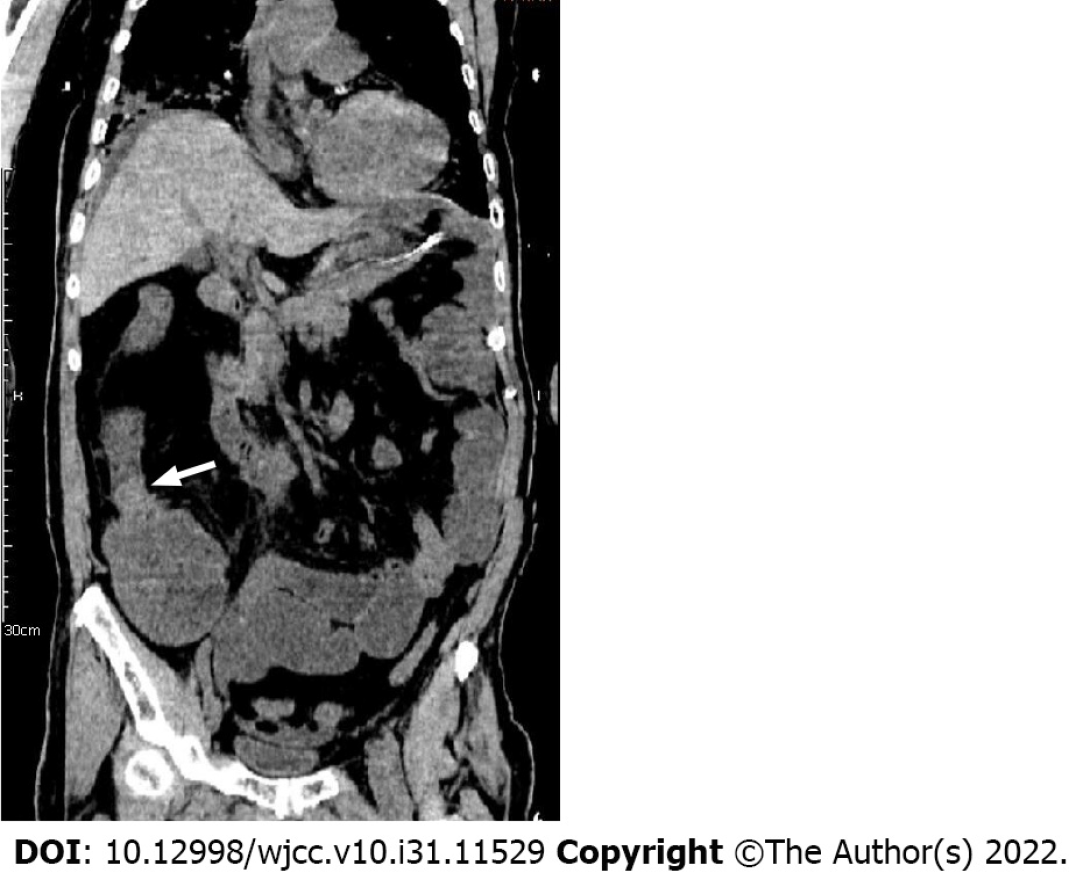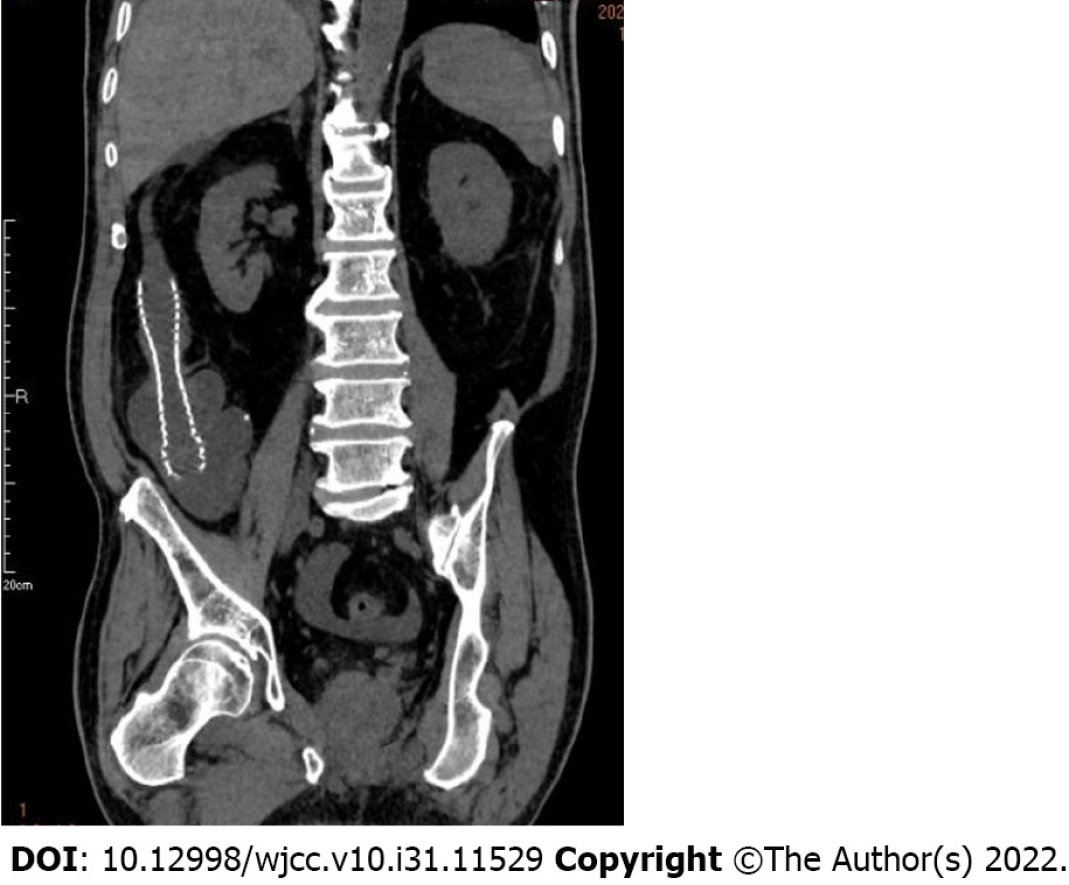Copyright
©The Author(s) 2022.
World J Clin Cases. Nov 6, 2022; 10(31): 11529-11535
Published online Nov 6, 2022. doi: 10.12998/wjcc.v10.i31.11529
Published online Nov 6, 2022. doi: 10.12998/wjcc.v10.i31.11529
Figure 1 The patient’s abdominal computed tomography coronary image before the procedure.
It shows malignant obstruction (arrow) in the ileocecal region with diffuse small bowel dilation.
Figure 2 The process of the three attempts at different interventional approaches.
A: A single-curved catheter and a colonic stent release system (arrow) were successively used as a contrast catheter to reach the ileocecal region but failed to pass through the obstructed segment; B: On the second day, as shown by the plain film, the guidewire, which is assumed to have been pushed through the lesion with the assistance of colonoscopy, is located in the middle part of the transverse colon and still could not reach the obstructed segment; C: A tandem contrast catheter (proximal 7F, distal 5.5F, Boston Scientific) with the wire, was passed through the obstructed segment to reach the distal ileum, with the contrast media showing the obstructing lesion (arrow head) and dilated lumen; D: An uncovered stent is introduced and successfully deployed to the lesion segment (arrows) under fluoroscopic guidance alone.
Figure 3 The computed tomography scan 2 d after the procedure.
It shows the stent in its full expansion and in a good position, with the obstructed lumen completely recovered.
- Citation: Wu Y, Li X, Xiong F, Bao WD, Dai YZ, Yue LJ, Liu Y. Malignant obstruction in the ileocecal region treated by self-expandable stent placement under the fluoroscopic guidance: A case report. World J Clin Cases 2022; 10(31): 11529-11535
- URL: https://www.wjgnet.com/2307-8960/full/v10/i31/11529.htm
- DOI: https://dx.doi.org/10.12998/wjcc.v10.i31.11529











